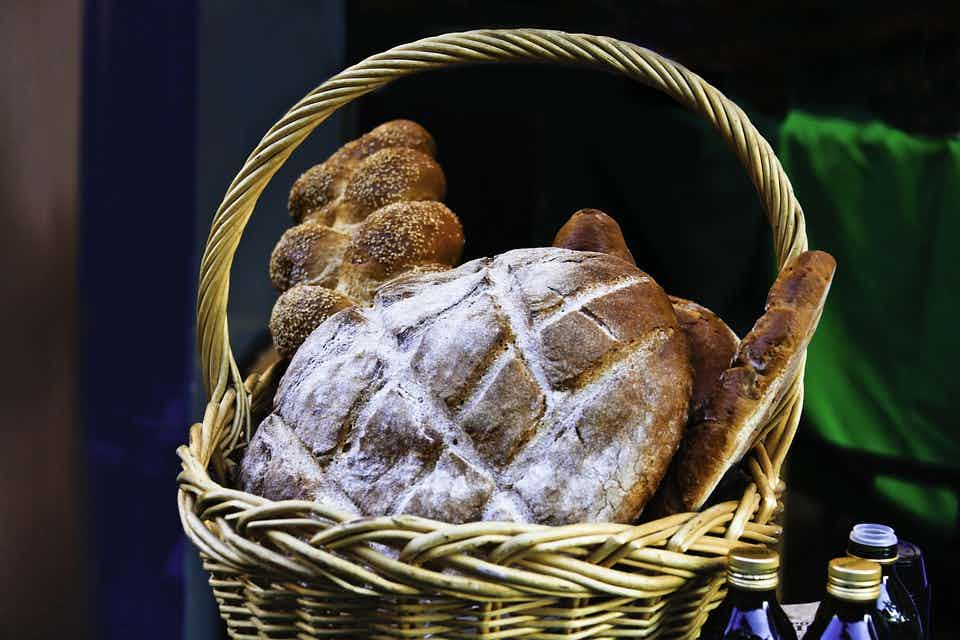Sourdough bread making became one of the top activities for people to do during lockdown in 2020. Many people had more time on their hands to master the art of baking, so why not?! Sourdough is an absolute craft and a labour of love. The key to the perfect sourdough is a great starter and, of course, patience.
These helpful tips and tricks will earn you the "king/queen of the sourdough" badge. Trendy, healthy, and just downright delicious, sourdough is a great dish to have in your repertoire. Sourdough is versatile enough to add to lunches and adds flavour as a side to soups and saucy plates of pasta.
Frustrated with food waste or don't know where to start with a shopping list? Try a food subscription box to wash those worries away and put your diet - and finances - on the right track!
The perfect sourdough starter
Making your sourdough starter is the first part of the process. A sourdough yeast starter is where you effectively grow all the necessary bacteria that give your sourdough bread that great flavour and texture. It's a mixture of flour and water which creates the perfect conditions for natural yeast to grow in. The whole process usually takes about six days (we told you it’s a labour of love!). Here’s a day-by-day breakdown on your sourdough starter journey.
Ingredients
- 1 bag of all-purpose flour
- 120g whole-grain flour
- 120 ml distilled or bottled water water
Day 1: Starting your starter
In a large clean jar, mix the whole-grain flour and water using a fork. Ensure that all the flour has been incorporated into the mixture. The consistency of the mixture should resemble peanut butter.
Day 2: Check for bubbles
After leaving the mixture for about 24 hours, you should see some bubbles begin to form. They should appear on the surface of your mix. If you don’t see any bubbles don't worry, they may have formed and disappeared again overnight. Leave the starter for another 24 hours.
Day 3: Pour out any hooch
On the third day, you may see a dark brown, odorous liquid start to form. This is known as hooch, and it's the first sign that your starter needs feeding. Before you start the feeding process, you’ll need to throw away half a cup of the starter. Add one cup of the bread flour and half a cup of water. Repeat approximately every 12 hours. You’ll know your starter needs feeding when it has grown in size and produces hooch.
Day 4 and 5: Keep up the feeding process
If in doubt, it's better to not feed the starter. Overfeeding will cause the starter to dilute the natural yeast it's growing. You should see a "rise and fall pattern", meaning that your starter should grow in size when fed and start to fall when it's "hungry".
Day 6: One last feeding
Take one-third of a cup of the starter and put it in a clean jar. You can discard the rest. Add another cup of all-purpose flour and half a cup of water. Within 4 - 6 hours, the starter should have doubled in size. You can check if the starter is ready to make bread by doing a float test. Take a teaspoon of the start off the top of the mixture and put it in water. If it floats, the starter is ready for your sourdough bread! You’ll want to make your bread with a slightly hungry starter; remember to discard any hooch before the baking process.
We spoke to Izzy Hossack from Top With Cinnamon, who gave us this great tip as an alternative to discarding your excess starter: "Instead of throwing away your sourdough discard each time you feed your starter, you can save the discard in a tub in the fridge (for up to 3 weeks). When you have enough of the sourdough discard saved, you can use it in other baking recipes such as pancakes, waffles, brownies and banana bread."
And finally, the sourdough recipe
Now that you have your perfect sourdough starter, it’s finally time to make your delicious loaf. The good news is that making the bread does not take half as long as the starter so you’ll be feasting on sourdough in no time.
Ingredients
- 300g sourdough starter
- 500g white bread flour
- 2 tsp brown sugar
- 2 tsp salt
- 1 tbsp olive oil
- 250 ml water
- 8 Ice cubes (keep frozen until needed)
Method
- In a large bowl, mix the starter, flour, 250ml of water, salt, and sugar.
- Once sufficiently combined, knead the dough on a dusted surface for 10 minutes.
- You’ll know the dough is kneaded correctly once you can stretch the mix to the point you can look through it.
- Lightly grease a clean bowl with olive oil.
- Place the dough in the bowl and cover with a damp tea towel.
- Leave the bowl in a warm place for 2 - 3 hours. The dough will take a lot longer to rise than bread that has ordinary yeast in it.
- Put the dough back onto a dusted surface and knead it again for 2 minutes, or just until the dough has the air bubbles knocked out of it.
- Split the dough into two equal portions and shape both of them into a ball.
- Cover two tea towels in flour and line two bowls with a tea towel each.
- Place a ball of dough into each bowl and leave it to prove for another two and a half hours.
- Preheat your oven to 230°C.
- Place the eight ice cubes in a baking tin and put it in the bottom of the oven to create steam.
- Lifting with the tea towel, place the dough onto a baking tray.
- Score each loaf with three diagonal lines across the top using a sharp knife.
- Bake the loaves for 35 - 40 minutes until a crust has formed, and the loaf sounds hollow when you tap it.
Delicious dishes
Sourdough is already bursting with flavour, so just a thick slice of your masterpiece with a generous dollop of butter is satisfying in itself. Eating the bread dipped in olive oil and balsamic vinegar is also a great way to enjoy the bread if you’re keen to nibble immediately after all your hard work.
But it’s also popular to have toasted with poached eggs in the morning. Why not treat yourself and add some smoked salmon with cream cheese to that? For lunch and dinner time snacks, sourdough is the preferred bread to enjoy with shakshuka and a side of avocado or guacamole. Sourdough is the perfect side to extra saucy dishes as it tastes great when you can mop up any delicious goodies still left on your plate. The bread will also add a different spin to your favourite sandwich, toasted or not!
Health benefits
Making sourdough yourself is way healthier than buying it at the shops. Commercial sourdough uses dried yeast as it is quicker and adds consistency to the recipe. With this faster method, you lose the nutritional benefits of slow fermentation you enjoy when you make the starter yourself. Sourdough is less likely to spike your blood sugar due to the way the slow method the natural yeast is made. Experts believe the slow fermentation process of sourdough modifies carbohydrate molecules in a way that reduces the bread's glycemic index (GI), slowing down the rate sugar is released into the bloodstream.
According to researchers, sourdough is also way easier to digest because of the concentrations of prebiotics and probiotics. Prebiotics are non-digestible, which sounds bad, but they have massive benefits for the bacteria in your gut. Probiotics are also great bacteria in healthy foods and some supplements.
For those who are less tolerant to gluten, sourdough is a great way to enjoy bread as it has a lower gluten content due to the fermentation process. However, it is advised that those who are highly sensitive or allergic to gluten avoid sourdough as the dough's fermentation does not get rid of the gluten content completely.








